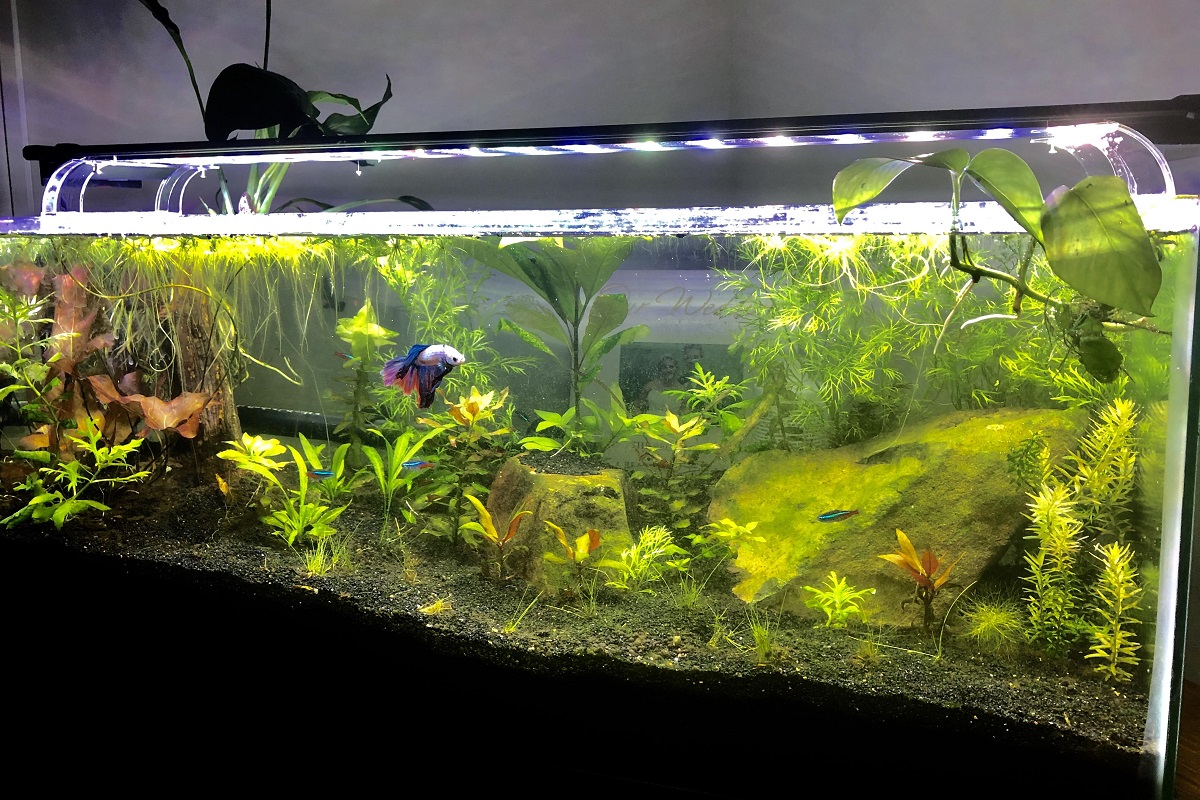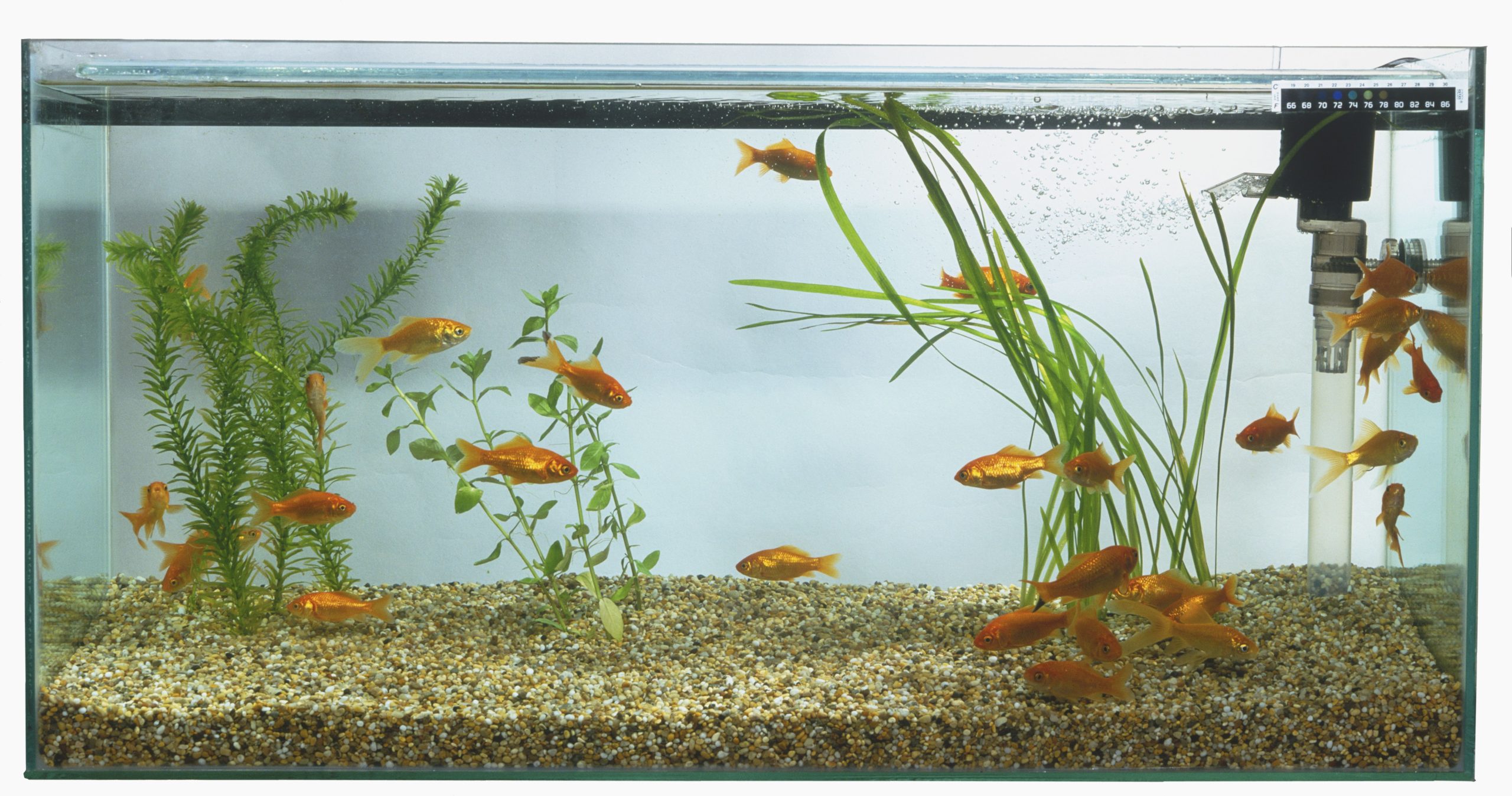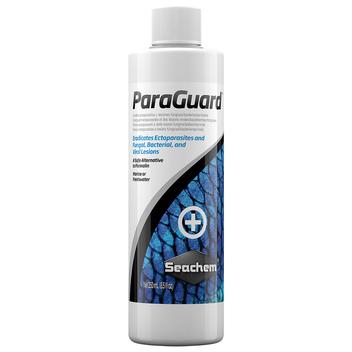Why Fish Tank Filters are Essential: A Must-Have for Your Aquarium
Yes, a filter is necessary for a fish tank. Keeping a clean and healthy environment is crucial for your fish’s well-being.
Maintaining the water quality in a fish tank can be a tedious task, and a filter can make a huge difference in managing this task. Filters improve water quality by removing excess food, waste, and other debris, ensuring that ammonia and nitrate levels don’t reach harmful levels.
This also helps prevent the accumulation of harmful bacteria. Without a filter, your fish may become stressed, sick, and even die. Therefore, investing in a good quality filter is essential for keeping your fishes healthy and happy.

Credit: fishlab.com
Benefits Of Having A Fish Tank Filter
Having a fish tank at home is an exciting experience. It brings beauty, tranquility, and life to your living space. However, keeping the fish tank healthy for the creatures inside can be challenging. A fish tank filter can make things easier by providing a wide range of benefits for the fish and aquatic plants.
Below are the benefits of having a fish tank filter, which can help maintain water quality, remove harmful waste, and keep the water clear.
Maintain Water Quality
A crucial benefit of having a fish tank filter is maintaining water quality in the aquarium. A fish tank tends to accumulate debris from uneaten food, plants, and other waste produced by fish. When not removed, these contaminants can increase ammonia and nitrate levels that can lead to poor health for the fish and aquatic plants.
A fish filter works by eliminating the fish waste found in the water. It removes the debris from the water and promotes good bacteria to thrive, which will break down the toxins and reduce the nitrate levels.
Benefits:
- Fish filter keeps water free from debris and contaminants to promote a healthy aquatic environment.
- It creates a natural process for water filtration, which will keep the ammonia and nitrate levels in check.
Remove Harmful Waste
Another benefit of having a fish tank filter is the removal of harmful waste from the water. Fish excrete waste and release ammonia into the water. An excessive amount of ammonia in the water can be toxic to the fish and can cause stress or disease.
A fish filter cleans the water by cycling it through different filters to remove the toxic buildup. This ensures that the fish in the tank are safe and healthy with less risk of infection or disease.
Benefits:
- The fish tank filter eliminates the toxic buildup of ammonia in the aquarium water.
- It promotes healthy bacterial growth, which ensures the elimination of waste products from the water.
Keep Water Clear
A clear aquarium with clean water is visually appealing and essential for the overall health of the fish and aquatic plants inside the tank. A fish tank filter plays an important role in keeping the water clear by removing the debris and particulate matter.
It helps keep the water oxygenated and crystal clear, enhancing the beauty of the aquarium and ensuring the fish can be easily visible.
Benefits:
- A fish filter keeps the water crystal clear, which improves the overall appearance of the aquarium.
- It reduces the frequency of water changes and promotes a healthy environment for the fish and aquatic plants.
Overall, having a fish tank filter in your aquarium provides many benefits, including improved water quality, waste elimination, and clear water. These benefits are essential for the overall health and wellbeing of the fish and aquatic plants they will be living alongside.
To ensure a healthy and thriving aquarium environment, using a fish tank filter is highly recommended.
Types Of Fish Tank Filters
When it comes to setting up a fish tank, one crucial aspect is ensuring a clean and healthy environment for your aquatic pets. A filter plays a vital role in keeping the water clean and free from harmful bacteria. There are different types of filters available, each with unique features and benefits.
Here are the different types of fish tank filters in the market.
Hang-On-Back Filters
As the name suggests, hang-on-back filters are easy to install and hang securely on the back of your fish tank. These filters work by drawing water into the filter through an intake tube, passing it through the filter media, and then returning the filtered water back to the tank.
Key points:
- Inexpensive and widely available
- Easy to install and maintain
- Suitable for small to medium-sized aquariums
- Provides mechanical, biological, and chemical filtration
Canister Filters
Canister filters are an efficient and powerful filtration system commonly used in large aquariums. This filter works by drawing water into a sealed canister and forcing it through several stages of filter media for thorough cleaning before returning it to the aquarium.
Key points:
- Ideal for large aquariums with a high bio-load capacity
- Quiet operation
- Provides mechanical, biological, and chemical filtration
- Easy to maintain
Undergravel Filters
Undergravel filters are a popular choice for aquarium hobbyists because they are easy to set up and budget-friendly. These filters consist of a perforated plate that sits at the bottom of the tank and draw water through the gravel, which serves as the filter media, and back to the surface.
Key points:
- Budget-friendly
- Perfect for nano aquariums
- Provides biological and mechanical filtration
- Easy to install
Sponge Filters
Sponge filters are the simplest and cheapest type of filter, and they are ideal for smaller aquariums. They work by drawing water through the sponge, which traps debris and bacteria, creating a healthy environment for your fish. The sponge filter is a popular choice for betta fish, shrimp, and other small aquatic pets.
Key points:
- Affordable and easy to install
- Provides gentle filtration
- Suitable for small aquariums
- Provides biological filtration
Power Filters
Power filters are a popular choice for aquarium hobbyists because of their efficiency and effectiveness. They work by drawing water into the filter through a tube, passing it through several stages of filter media and then returning the filtered water back to the aquarium.
This filtration system is ideal for beginners as they are straightforward to install and maintain.
Key points:
- Provides mechanical, biological, and chemical filtration
- Ideal for beginners
- Easy to maintain
- Suitable for small to medium-sized aquariums
Choosing the appropriate filter is essential in maintaining the overall health of your aquarium. By selecting the right filter type, you can create a clean and healthy environment for your aquatic pets.
Factors To Consider When Choosing A Fish Tank Filter
Important Factors To Consider When Choosing A Fish Tank Filter
A well-functioning fish tank filter is crucial for maintaining a healthy and vibrant aquatic environment. When choosing the perfect filter for your aquarium, there are a few important factors that you should take into consideration.
Choosing The Right Filter Size, Type, And Mechanism
Choosing the correct filter size is vital for ensuring that your aquarium is filtered correctly. A filter that is too large or too small for your tank can lead to a number of issues. There are various types of filters, including internal filters, external filters, canister filters, and hang-on-back filters.
The type of filter you choose will depend on factors such as the size of your aquarium, the filter media you plan to use, and the type of fish you plan on keeping. It’s also important to consider the filtration mechanism that your filter uses.
Some common filtration mechanisms include mechanical, biological, and chemical.
How Water Pressure, Flow Rate, And Maintenance Requirements Play Into The Decision-Making Process
Apart from the filter size, type, and mechanism, it’s also important to consider the water pressure and flow rate of your filter. The flow rate should be appropriate for your aquarium size, meaning that all the water in your tank should ideally pass through the filter at least three to four times every hour.
You should also consider the maintenance requirements of the filter you choose. Some filters may require frequent cleanings or filter media replacements, which may not be feasible for all aquarium owners.
Choosing the right filter for your fish tank can seem daunting at first, but taking these factors into consideration can help you select the right one for your aquarium’s individual needs.
Maintenance Of Fish Tank Filters
If you want to ensure a healthy and thriving aquarium, maintaining your fish tank filter should be a top priority. Here are some necessary steps to maintain the fish tank filter:
- Regular cleaning: Filters tend to accumulate debris over time, which affects their efficiency. It’s necessary to clean your filter regularly to prevent blockages and maintain optimal performance. Experts recommend cleaning the filter every two to four weeks, depending on the tank size and bio-load.
- Replace filter media: Filters work by removing waste and impurities from the water, and the filtration medium is responsible for this process. After cleaning the filter, inspect the filter media for any damage or excess grime. If the medium has started to crumble or is too dirty, it is time to replace it.
- Prime the filter: Once the filter has been cleaned and the new media installed, it needs to be primed. This can be done by filling the filter with water and letting it run for a few minutes to remove any air bubbles from the system.
- Monitor the performance: It’s essential to keep an eye on the performance of the filter to ensure that it’s working optimally. Check the flow rate and the water quality regularly, and be alert to any changes in your fish’s behavior.
Properly Cleaning And Replacing The Filter Media
Cleaning the filter media is critical for maintaining optimal performance and water quality. Here is how to do it properly:
- Turn off the filter and remove the media: Before cleaning the filtration media, switch off the filter and remove the filtration medium to avoid damaging the filter itself.
- Rinse the media: Take the filter media and rinse it under tap water to remove any debris or grime. Do not use any cleaning agents or detergents, as they can harm the bacteria that grow on the media.
- Soak the media in water: After rinsing, soak the media in water from the aquarium for approximately 10-15 minutes. This helps to keep the beneficial bacteria alive while being placed back in the filter.
- Reinstall media and prime the filter: Once the media is cleaned and soaked, put it back in the filter and prime it. Fill up the tank and run the filter for a few minutes to remove any bubbles and ensure proper water flow.
Importance Of Monitoring Performance Of The Filter
Monitoring the performance of the filter is crucial for maintaining the health of your fish and the overall condition of your aquarium. Here are some reasons why:
- Keeps the water clean: Filters remove impurities from the aquarium water, and when they are not functioning ideally, the water might become cloudy, algae growth may occur, and waste buildup can poison fish if not dealt with promptly.
- Prevents blockages: Dirt and debris can accumulate over time, resulting in clogs that could harm a filter’s performance, leading to harm effects on the fish.
- Enhances efficiency: Filters are most efficient when they are clean and functioning optimally. Proper monitoring of your filter helps you to ensure that it runs efficiently and maintains excellent water quality.
Maintaining a fish tank filter is necessary to keep your aquatic pets healthy and happy. Following these steps, ensuring the filter is operating effectively, and monitoring it regularly should keep the ecosystem well-maintained.
Frequently Asked Questions Of Is Filter Necessary For Fish Tank
Q: Why Do I Need A Filter For My Fish Tank?
A: filters remove debris and toxic substances to keep your fish healthy and the tank clean.
Q: How Often Should I Clean My Fish Tank Filter?
A: it is recommended to clean your filter every month to maintain optimal filtration efficiency.
Q: Can I Use A Fish Tank Without A Filter?
A: a filter is necessary for a sustainable fish tank ecosystem and to prevent the buildup of harmful toxins.
Q: What Type Of Filter Should I Use For My Fish Tank?
A: there are various types of filters available such as canister, sponge, and hang-on-back filters. Choose one based on tank size and fish type.
Conclusion
Keeping a fish tank healthy is crucial for the longevity of the fish and the overall aesthetic appeal of the tank. It is evident that a filter is a necessary component of a fish tank. It helps to keep the water clean by removing debris, waste, and toxins that may harm the aquatic life inside.
The filter also helps to maintain a stable and suitable environment for the fish to thrive in. Without a filter, the water in the tank can get cloudy, resulting in a foul smell and an unhealthy living situation for your fish.
Investing in a filter for your fish tank is not only beneficial but necessary. It helps to maintain a clean, healthy, and pleasant environment for your fish to live in.






